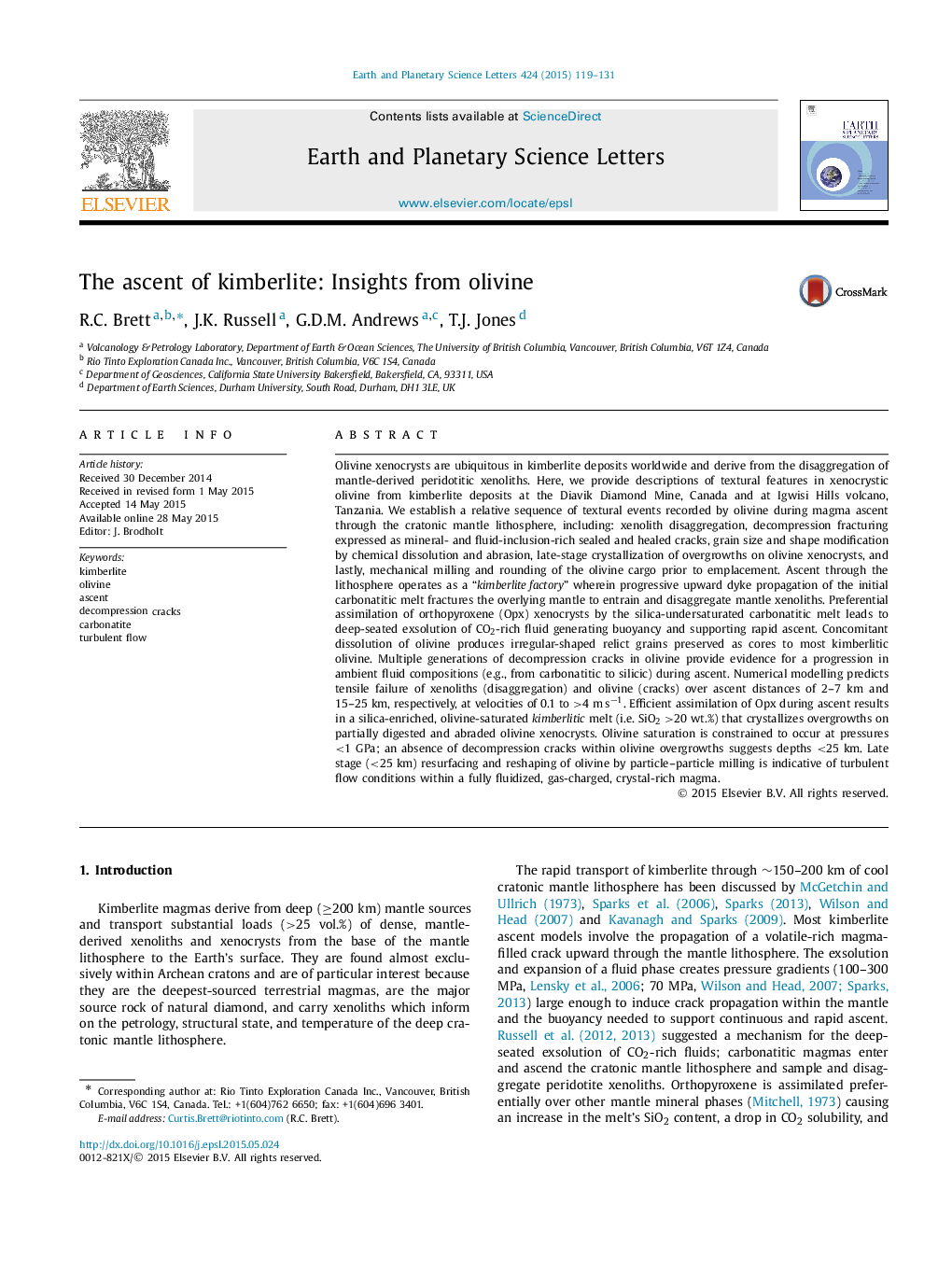| کد مقاله | کد نشریه | سال انتشار | مقاله انگلیسی | نسخه تمام متن |
|---|---|---|---|---|
| 6428222 | 1634732 | 2015 | 13 صفحه PDF | دانلود رایگان |
- Kimberlites are carbonatitic melts modified by rapid ascent through mantle lithosphere.
- Rapid ascent over 15-25 km forms decompression cracks in xenocrystic olivine (Ol).
- Ol surfaces are mechanically milled by turbulent flow of gas-charged, multiphase magma.
- Ol saturation of melt is late stage and crystallization is at shallow depths <25 km.
Olivine xenocrysts are ubiquitous in kimberlite deposits worldwide and derive from the disaggregation of mantle-derived peridotitic xenoliths. Here, we provide descriptions of textural features in xenocrystic olivine from kimberlite deposits at the Diavik Diamond Mine, Canada and at Igwisi Hills volcano, Tanzania. We establish a relative sequence of textural events recorded by olivine during magma ascent through the cratonic mantle lithosphere, including: xenolith disaggregation, decompression fracturing expressed as mineral- and fluid-inclusion-rich sealed and healed cracks, grain size and shape modification by chemical dissolution and abrasion, late-stage crystallization of overgrowths on olivine xenocrysts, and lastly, mechanical milling and rounding of the olivine cargo prior to emplacement. Ascent through the lithosphere operates as a “kimberlite factory” wherein progressive upward dyke propagation of the initial carbonatitic melt fractures the overlying mantle to entrain and disaggregate mantle xenoliths. Preferential assimilation of orthopyroxene (Opx) xenocrysts by the silica-undersaturated carbonatitic melt leads to deep-seated exsolution of CO2-rich fluid generating buoyancy and supporting rapid ascent. Concomitant dissolution of olivine produces irregular-shaped relict grains preserved as cores to most kimberlitic olivine. Multiple generations of decompression cracks in olivine provide evidence for a progression in ambient fluid compositions (e.g., from carbonatitic to silicic) during ascent. Numerical modelling predicts tensile failure of xenoliths (disaggregation) and olivine (cracks) over ascent distances of 2-7 km and 15-25 km, respectively, at velocities of 0.1 to >4 mâsâ1. Efficient assimilation of Opx during ascent results in a silica-enriched, olivine-saturated kimberlitic melt (i.e. SiO2 >20 wt.%) that crystallizes overgrowths on partially digested and abraded olivine xenocrysts. Olivine saturation is constrained to occur at pressures <1 GPa; an absence of decompression cracks within olivine overgrowths suggests depths <25 km. Late stage (<25 km) resurfacing and reshaping of olivine by particle-particle milling is indicative of turbulent flow conditions within a fully fluidized, gas-charged, crystal-rich magma.
233
Journal: Earth and Planetary Science Letters - Volume 424, 15 August 2015, Pages 119-131
